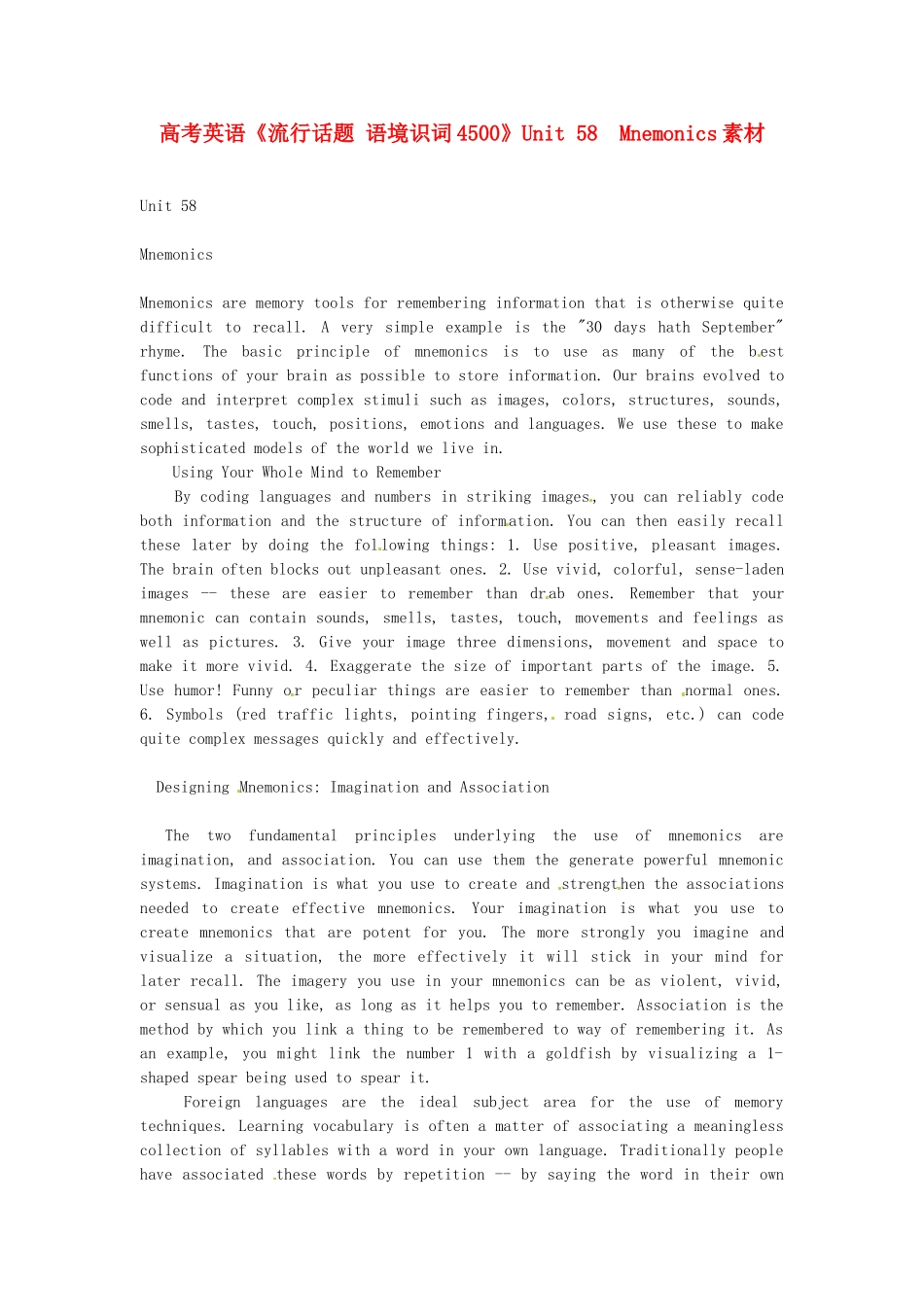高考英语《流行话题 语境识词 4500》Unit 58 Mnemonics 素材Unit 58 Mnemonics Mnemonics are memory tools for remembering information that is otherwise quite difficult to recall. A very simple example is the "30 days hath September" rhyme. The basic principle of mnemonics is to use as many of the b est functions of your brain as possible to store information. Our brains evolved to code and interpret complex stimuli such as images, colors, structures, sounds, smells, tastes, touch, positions, emotions and languages. We use these to make sophisticated models of the world we live in. Using Your Whole Mind to Remember By coding languages and numbers in striking images , you can reliably code both information and the structure of inform ation. You can then easily recall these later by doing the following things: 1. Use positive, pleasant images. The brain often blocks out unpleasant ones. 2. Use vivid, colorful, sense-laden images -- these are easier to remember than dr ab ones. Remember that your mnemonic can contain sounds, smells, tastes, touch, movements and feelings as well as pictures. 3. Give your image three dimensions, movement and space to make it more vivid. 4. Exaggerate the size of important parts of the image. 5. Use humor! Funny or peculiar things are easier to remember than normal ones. 6. Symbols (red traffic lights, pointing fingers, road signs, etc.) can code quite complex messages quickly and effectively. Designing Mnemonics: Imagination and Association The two fundamental principles underlying the use of mnemonics are imagination, and association. You can use them the generate powerful mnemonic systems. Imagination is what you use to create and strengthen the associations needed to create effective mnemonics. Your imagination is what you use to create mnemonics that are potent for you. The more strongly you imagine and visualize a situation, the more effectively it will stick in your mind for later recall. The imagery you use in your mnemonics can be as violent, vivid, or sensual as you like, as long as it helps you to remember. Association is the method by which you link a thing to be remembered to way of remembering it. As an example, you might link the number 1 with a goldfish by visualizing a 1-shaped spear being used to spear it. Foreign languages are the ideal subject area for the use of memory techniques. Learning vocabulary is often a matter of associating a meaningless collection of syllables with a word in your own language. Traditionally people have associated these words by repetition -- by saying the word in their own language and the foreign language time and time again. You can improve on this tedious way of learning by using mnemonic s. For instance, you may use images to link a word in your own language with a word in a foreign language. English: grumpy -- Chinese: LaoSaoManFuDe Image: a gru mpy woman groaning with irritation.

